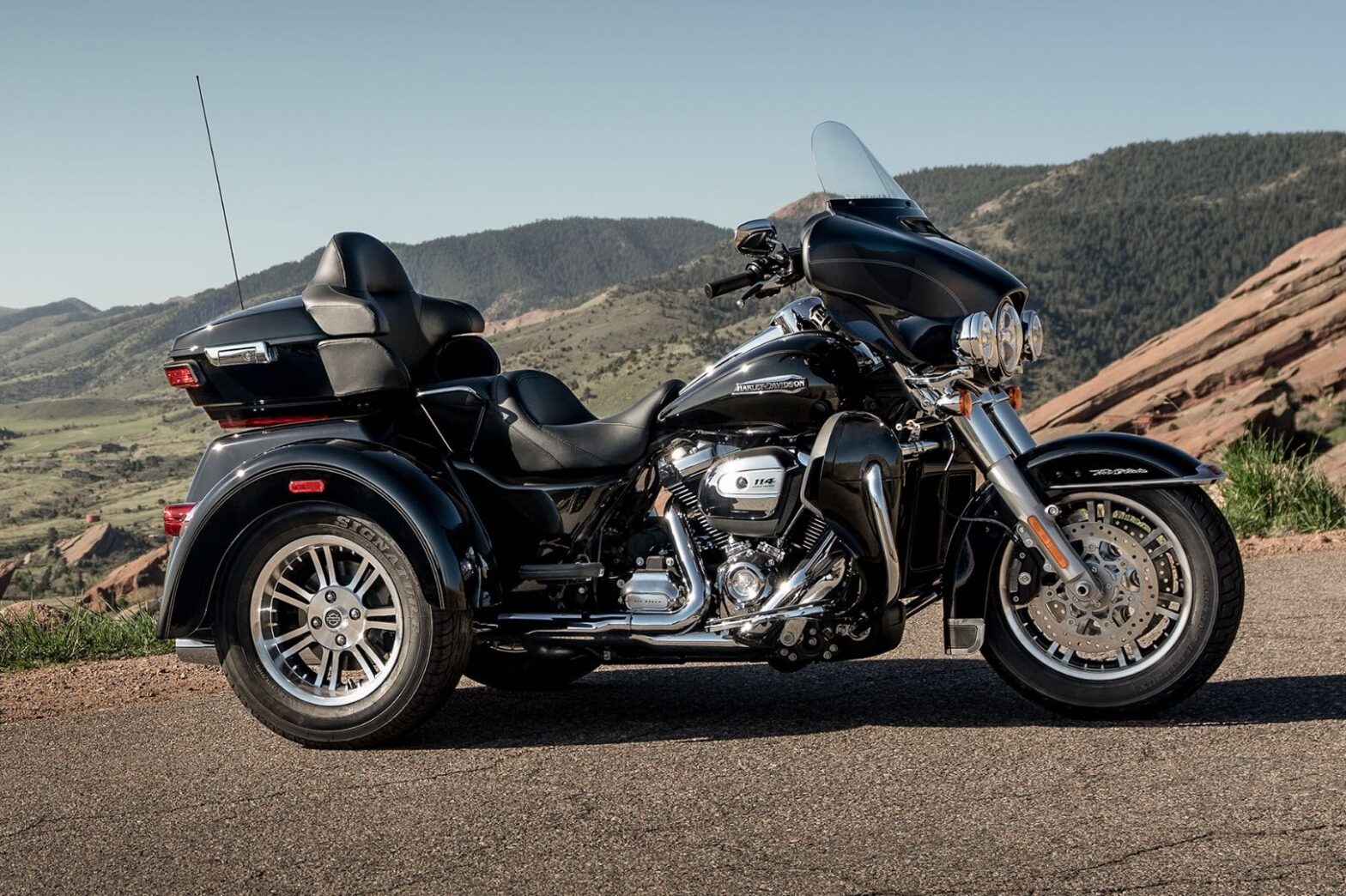2009-2023 Harley Davidson FLHTCUTG Tri Glide Engine Guide
The Harley-Davidson FLHTCUTG Tri Glide, which was made from 2009 to 2023, is a famous and long-lasting part of the history of American motorbike manufacturing. Here’s what makes this trike so special: its engine is not only strong, but it also shows how committed Harley is to quality and new ideas. Over the course of more than ten years of production, the FLHTCUTG Tri Glide’s engine has seen many changes and advancements, which is typical of how motorcycle technology is always changing. For many riders, this engine has been a constant partner on their many adventures and trips. It delivers the classic Harley-Davidson experience of throaty rumble, raw power, and an unmatched sense of freedom. Let’s get into the specifics of the engine that powered this amazing trike. We’ll look at its specs, how it changed over time, and the unique ride experience it provided during its long life.
STARTING THE ENGINE
General
The engine should be allowed to run slowly for 15-30 seconds. T his will allow the engine to warm up and let oil reach all surfaces needing lubrication. Failure to comply can result in engine damage. (00563b)
Do not roll the throttle before starting. Rolling the throttle before starting the motorcycle is unnecessary.
Starting
Shift transmission to neutral before starting the engine to prevent accidental movement, which could result in death or serious injury. (00044a)
- Turn the ignition/headlamp key switch to the IGNITION position. Do not roll the throttle.
NOTE The engine lamp will light for approximately 4 seconds and you will hear the fuel pump purr for approximately 2 seconds as it operates to fill the fuel lines with gasoline. - See Figure 42. Turn the off/run switch to the RUN position.
- Squeeze the clutch lever in against the handgrip.
NOTE To activate the starting system, the clutch interlock circuitry requires the clutch be disengaged, the clutch lever pulled in against left handgrip, and/or the transmission be shifted to the neutral position (green neutral lamp lit). - Press the starter button to start the motorcycle.
- Release the parking brake before riding the motorcycle. See CONTROLS AND INDICATORS, Reverse Operation.
NOTE If the fuel tank becomes completely dry, it may take a few seconds longer to start the motorcycle after filling the tank. It will not be necessary to take any extraordinary measures before starting the motorcycle.
Automatic Compression Release (ACR)
The engine should be allowed to run slowly for 15-30 seconds. This will allow the engine to warm up and let oil reach all surfaces needing lubrication. Failure to comply can result in engine damage. (00563b)
The vehicle is equipped with an Automatic Compression Release (ACR). During starting, a small auxiliary valve in the cylinder head is opened automatically by the ECM. The open valve releases the air compressed in the cylinder heads and allows the starter motor to turn the high compression engine over a faster rate to aid starting.
After starting and during normal operation, the ACR valves remain closed.

- Engine off/run switch
- Engine start switch
Figure 42. Right Handlebar Controls
FAQs
Depending on the exact model, the engine displacement for Harley-Davidson Trike models from 2011 to 2023 normally ranges from 1,450cc to 1,868cc.
In this era, the majority of Harley-Davidson Trike engines are air-cooled, maintaining the iconic Harley-Davidson appearance and feel.
ESPFI, or Electronic Sequential Port Fuel Injection, is used by these engines to distribute fuel precisely and boost performance.
Although the torque output varies between models, it typically falls between 120 and 168 lb-ft (163 and 228 Nm).
According to the manufacturer’s recommendations or every 5,000 miles (8,000 kilometers), Harley-Davidson advises changing the oil in your vehicle.
Yes, ordinary unleaded gasoline with an octane level of 87 or above is intended to be used with these engines.
Depending on the engine and riding conditions, the cruising range can change, but it normally ranges from 150 to 200 miles (240 to 320 kilometers) per tank.
To control engine temperature, the majority of vehicles employ a combination of air-cooling and strategically mounted oil coolers.
The belt drive found on most Harley-Davidson trikes provides smoother and quieter operation than a chain drive.
Exhaust systems, air intakes, and engine tuning kits are just a few of the aftermarket choices available for improving performance.
According to your owner’s manual, routine maintenance should include oil changes, tire inspections, and inspections every 5,000 miles (8,000 kilometers).
Useful Link
View Full PDF: Harley Davidson FLHTCUTG Tri Glide 2009-2023 User Manual
Specifications: 2009-2023 Harley Davidson FLHTCUTG Tri Glide Specifications


